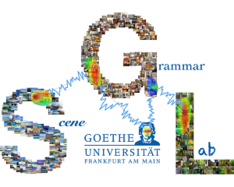Object and Scene Memory
HOW DETAILED IS OUR VISUAL MEMORY FOR NATURALISTIC SCENES?

Even though our memory of the visual world is not a one-to-one imprint of what meets our eyes, we seem to be able to detect small changes in naturalistic scenes. How detailed is the information that we can store from one glimpse of a scene to another? How do changes to objects in scenes affect eye movement control? We have found evidence that quite detailed episodic scene representations can be generated when merely inspecting naturalistic scenes. When observers encountered small deviations from these episodically learnt scene representations, a slightly moved object led to increased attentional allocation, i.e. more and longer fixations, to the changed object as well as its prior location regardless of whether this change was explicitly noticed (Võ, Zwickel, & Schneider, 2010). Even object representations that were created incidentally while fixating distractors during search seem to be stored in episodic memory (Võ, Schneider, & Matthias, 2008).
Related Publications
Võ, M. L.-H., Zwickel, J., & Schneider, W. X. (2010). Has someone moved my plate? The immediate and persistent effects of object location changes on gaze allocation during natural scene viewing. Attention, Perception, & Psychophysics, 72(5), 1251-1255. https://doi.org/10.3758/APP.72.5.1251 pdf
Võ, M. L.-H., Schneider, W. X., & Matthias, E. (2008). Transsaccadic scene memory revisited: A ‘Theory of Visual Attention (TVA)’ based approach to recognition memory and confidence for objects in naturalistic scenes. Journal of Eye-Movement Research, 2(2), 7. https://doi.org/10.16910/jemr.2.2.7 pdf
WHAT “EPISODIC” SCENE MEMORIES ARE CREATED AND HOW DO THESE INTERACT WITH THE SCENE SCHEMA REPRESENTATIONS STORED IN LONG-TERM MEMORY?
 Interestingly, despite being able to generate very detailed episodic memory representations, these do not necessarily help when searching for different objects in the same scene. In the image above, fixation-based heatmaps show which parts of the scene people inspected when searching for the jam jar. Observers who had never seen the scene before (EXP1) examined the same locations as observers who had previewed and memorized the scene for 30 s (EXP4). As long as objects within a scene are located in probable locations, general scene knowledge is preferentially used to guide object search. Episodic memory, however, dominates search guidance when the same object is searched for a second time or when objects are mislocated, rendering general scene knowledge useless (Võ & Wolfe, in press).
Interestingly, despite being able to generate very detailed episodic memory representations, these do not necessarily help when searching for different objects in the same scene. In the image above, fixation-based heatmaps show which parts of the scene people inspected when searching for the jam jar. Observers who had never seen the scene before (EXP1) examined the same locations as observers who had previewed and memorized the scene for 30 s (EXP4). As long as objects within a scene are located in probable locations, general scene knowledge is preferentially used to guide object search. Episodic memory, however, dominates search guidance when the same object is searched for a second time or when objects are mislocated, rendering general scene knowledge useless (Võ & Wolfe, in press).
Related Publications
Võ, M. L.-H., & Wolfe, J. M. (2015). The role of memory for visual search in scenes. Annals of the New York Academy of Sciences, 1339(1), 72-81. https://doi.org/10.1111/nyas.12667 pdf
Võ, M. L.-H., & Wolfe, J. M. (2013). The interplay of episodic and semantic memory in guiding repeated search in scenes. Cognition, 126(2), 198-212. https://doi.org/10.1016/j.cognition.2012.09.017 pdf
Võ, M. L.-H., & Wolfe, J. M. (2012). When does repeated search in scenes involve memory? Looking at versus looking for objects in scenes. Journal of Experimental Psychology: Human Perception and Performance, 38(1), 23-41. https://psycnet.apa.org/doi/10.1037/a0024147 pdf
Brockmole, J. R., & Võ, M. L.-H. (2010). Semantic memory for contextual regularities within and across scene categories: Evidence from eye movements. Attention, Perception, & Psychophysics, 72, 1803-1813. https://doi.org/10.3758/APP.72.7.1803 pdf




